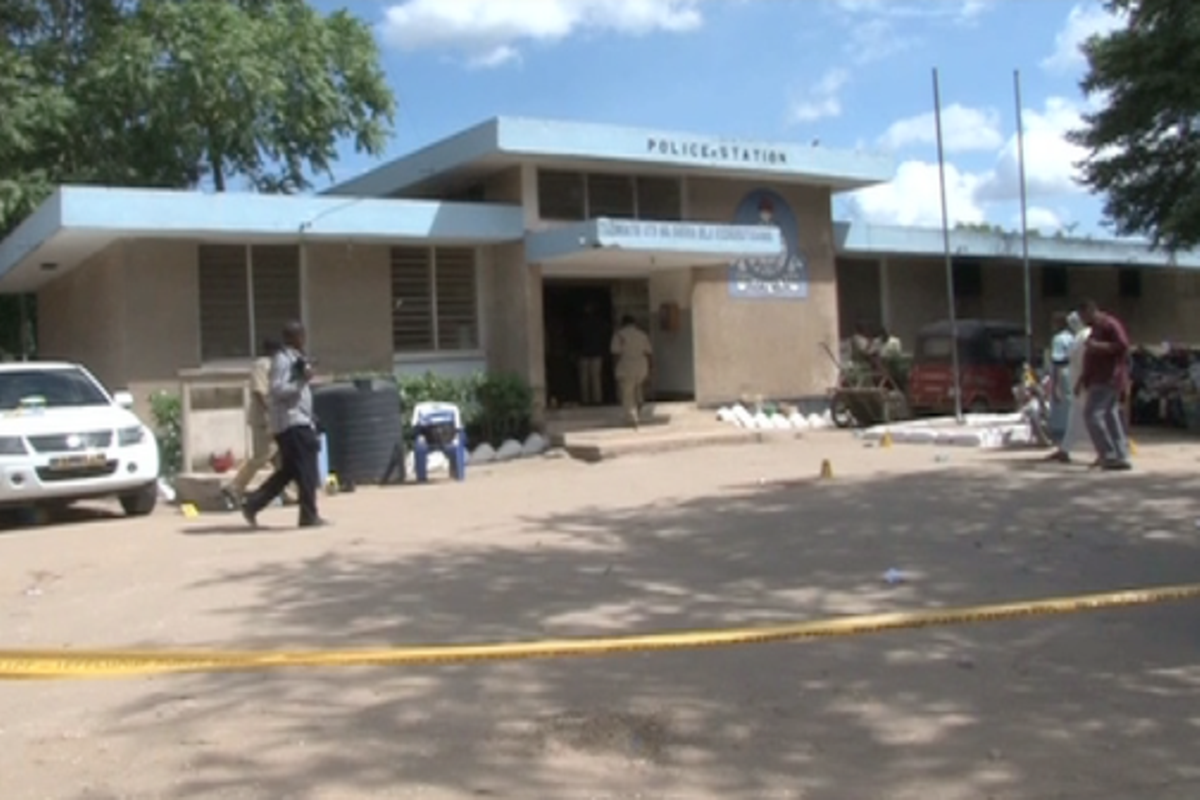Unguja. Zanzibar’s Ministry of Tourism and Heritage, while presenting its ten strategic priorities for the 2025/26 financial year in the House of Representatives, highlighted a key partner in the preservation of the island’s cultural and historical identity: Infinity Foundation.
The foundation has emerged as a vital supporter in the government’s mission to revive and protect Zanzibar’s heritage, stepping in where funding and resources have often fallen short.
While the government’s priorities include restoring historic sites, increasing tourism, and attracting investment, Infinity Foundation has provided timely interventions that are helping to maintain progress, especially in Stone Town, the cultural heart of Zanzibar.

President Hussein Mwinyi launches the Stone Town painting exercise on December 2, he is flanked by the chairman of the Infinity Group Samuel Saba
Preserving a world heritage site
Stone Town, a UNESCO World Heritage Site, has faced years of neglect and the steady deterioration of its coral-rag structures. A recent survey by the Stone Town Conservation and Development Authority reported that over 160 buildings are in poor condition, with 36 in critical disrepair, threatening the safety of residents and visitors alike.
In response, Infinity Foundation has taken up key restoration projects to stabilise and revive these iconic spaces. Beyond structural work, the Foundation is also repainting and revitalising buildings across Stone Town, bringing new life to its doors, windows, and alleyways. The improvements have been widely praised by the community and tourists.
Reviving public spaces: Mnazi Mmoja Gardens
Infinity Foundation is also leading the transformation of Mnazi Mmoja Gardens, once a neglected area, into a modern, community-friendly park. This revitalised space now includes landscaped gardens, pedestrian paths, lighting, and areas for local artisans and cultural events.
The project demonstrates how heritage conservation can go hand in hand with urban renewal, benefiting both locals and visitors.

Zanzibar’s President Dr. Hussein Mwinyi cuts the ribbon to mark the inauguration of the Mnazimmoja Gardens built by the Stone Town Municipal Council in collaboration with Infinity Developments Company. He is flanked by the Chairman of Infinity Developments Mr Samuel Saba on the left.
Community at the heart
Infinity Foundation works with local artisans, masons, and conservationists to ensure traditional skills are preserved and passed on. Rather than outsourcing work, the Foundation empowers the community through direct involvement.
Training programs offer young people and unemployed residents opportunities to learn skills in craftsmanship, restoration, and heritage management. Educational outreach has also helped increase awareness of Zanzibar’s heritage in schools and neighborhoods.
“The Foundation is not only restoring buildings, it’s restoring pride,” said a senior official from the Ministry of Tourism and Heritage. “By involving communities and respecting tradition, Infinity is showing that preservation can put people first.”
Supporting where the government cannot
Acting Minister Tabia Maulid Mwita noted that although tourism in Zanzibar has grown significantly, tourist arrivals increased by 65 percent from 2020 to 2024, budget constraints have delayed critical infrastructure and restoration projects.
Registered tourism investments rose from 995 in 2020 to 1,695 in 2024. Still, many government-led projects remain incomplete due to limited funds. In this context, Infinity Foundation’s support is helping fill gaps and drive sustainable, locally rooted progress.
A regional model for heritage work
Infinity Foundation is being recognised as a model for cultural stewardship across Africa. By blending heritage conservation with community development, the Foundation is not only preserving the past but helping to shape a stronger, more inclusive future.
As Zanzibar moves forward with plans for new heritage legislation and the creation of a Museum and Heritage Authority, Infinity’s work is a clear example of what is possible when philanthropy supports policy and preservation becomes a collective responsibility.













